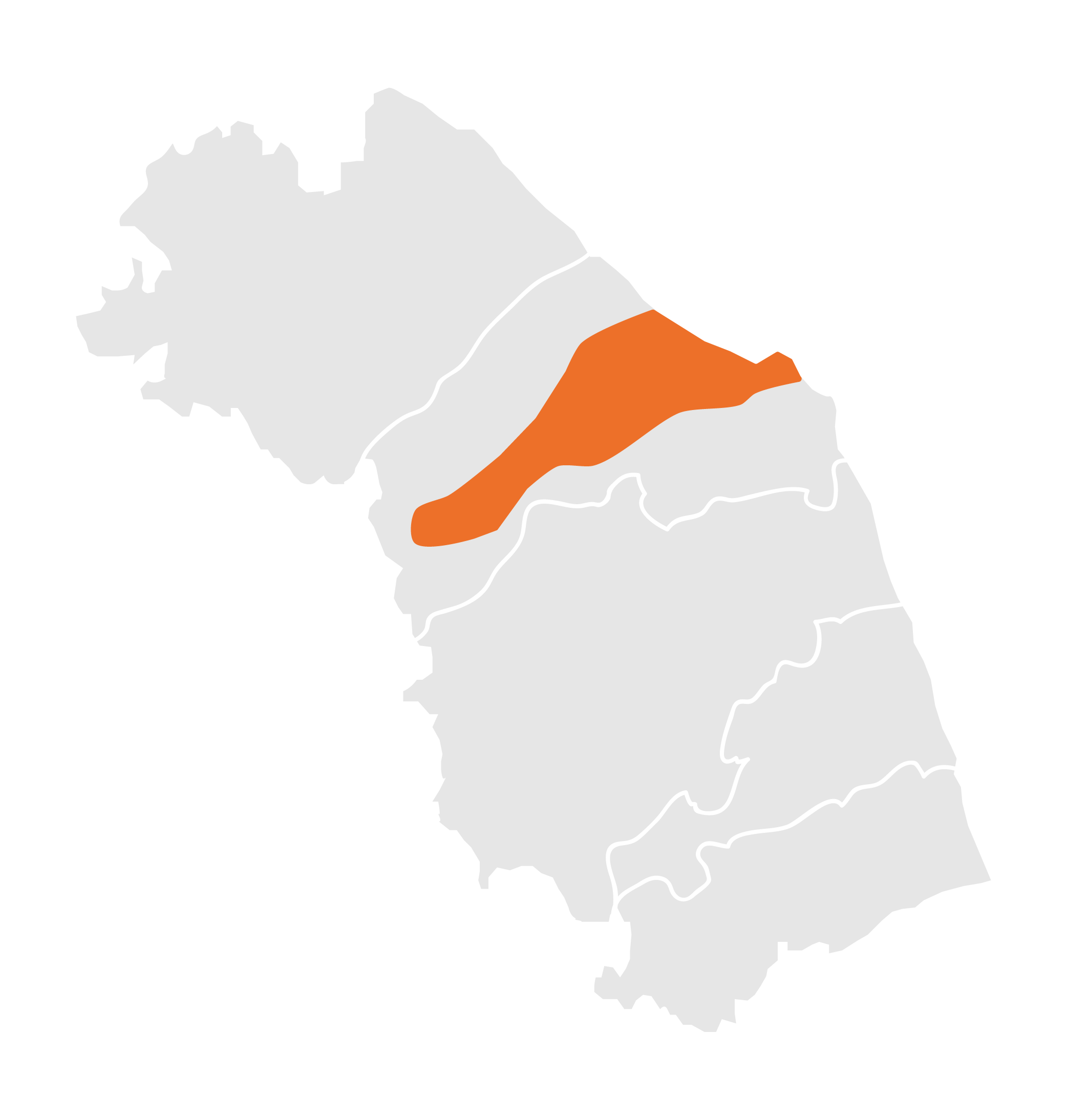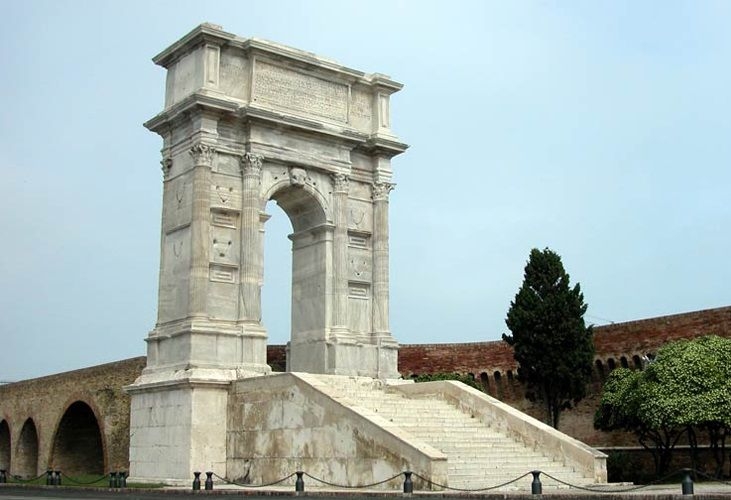
The Arch of Trajan is the monument symbol of the city of Ancona, thanks to its position on the water, and has always been defined as the gate to Ancona by those arriving by sea. Dedicated by the city to the Emperor Trajan for his role in expanding the port area, it was built between 115 and 116 AD, probably by Apollodorus of Damascus, a trusted architect and collaborator of Trajan. The honorific single fornix arch, on a tall podium of white limestone blocks from the Conero, is constructed with large blocks of white Turkish marble from Marmara. Four Corinthian columns are on the walls on both sides and support an attic richly adorned with molded cornices. These delimit an epigraphic mirror where engraved letters of gilded bronze, since lost, composed the dedicatory inscription. On the other side there are two inscriptions that name Plotina, Trajan's wife, and Marciana, the emperor's sister. The keystone facing the sea is decorated with a protome of Neptune, while the one facing land is difficult to interpret. On the top of the arch there are holes that had been used to house three statues, now lost, which must have represented the group of Plotina, Marciana and Trajan, perhaps depicted on horseback. The arch's facades must have been decorated with reproductions of rostra, of which only traces of the points of attachment remain. The survival of the arch to this day is due not only to its structural strength, but also to the fact that it has been a part of the defensive walls since the Middle Ages.
We have found no place to eat in the vicinity
We have found no place to sleep in the vicinity
Da Pesaro a San Benedetto del Tronto, lungo la costa Adriatica, alla scoperta dei principali porti e approdi frequentati dall’età del bronzo a oggi. Alla foce di fiumi e torrenti, entro piccole baie, promontori e grandi insenature, si svilupparono nell’antichità porti, porti canale, empori o semplici approdi. Questi scali furono il fulcro di una fitta rete di commerci marittimi che hanno dato vita a un intenso dialogo tra oriente e occidente, testimoniato dai ritrovamenti di reperti provenienti da tutto il bacino del Mediterraneo.
Nelle zone di confine dell’entroterra marchigiano i principi umbri di Camerino vivevano a contatto con numerosi villaggi, anch’essi retti da principi guerrieri piceni. I pregevoli corredi delle necropoli, risalenti alla fine dell’VIII - inizi VI sec. a.C., documentano i fitti scambi con l’oriente greco e con l’Etruria e attestano il ruolo cruciale di queste popolazioni nei traffici mercantili tra Adriatico e Appennino, che essi controllavano e da cui traevano le loro ricchezze.

|
Address | Banchina Nazario Sauro Ancona |

|
Visit Time | 15 min |

|
Reservation Required | no |

|
Bookshop | no |

|
Free Guided Tour | no |

|
Guided Tour | no |

|
Parking | Si, a pagamento |

|
Disabled Accessibility | yes |

|
Audioguide | no |

|
Didactic Rooms | no |

|
Conference room | no |

|
English language | no |

|
Public Transport | no |

|
Family Services | no |




